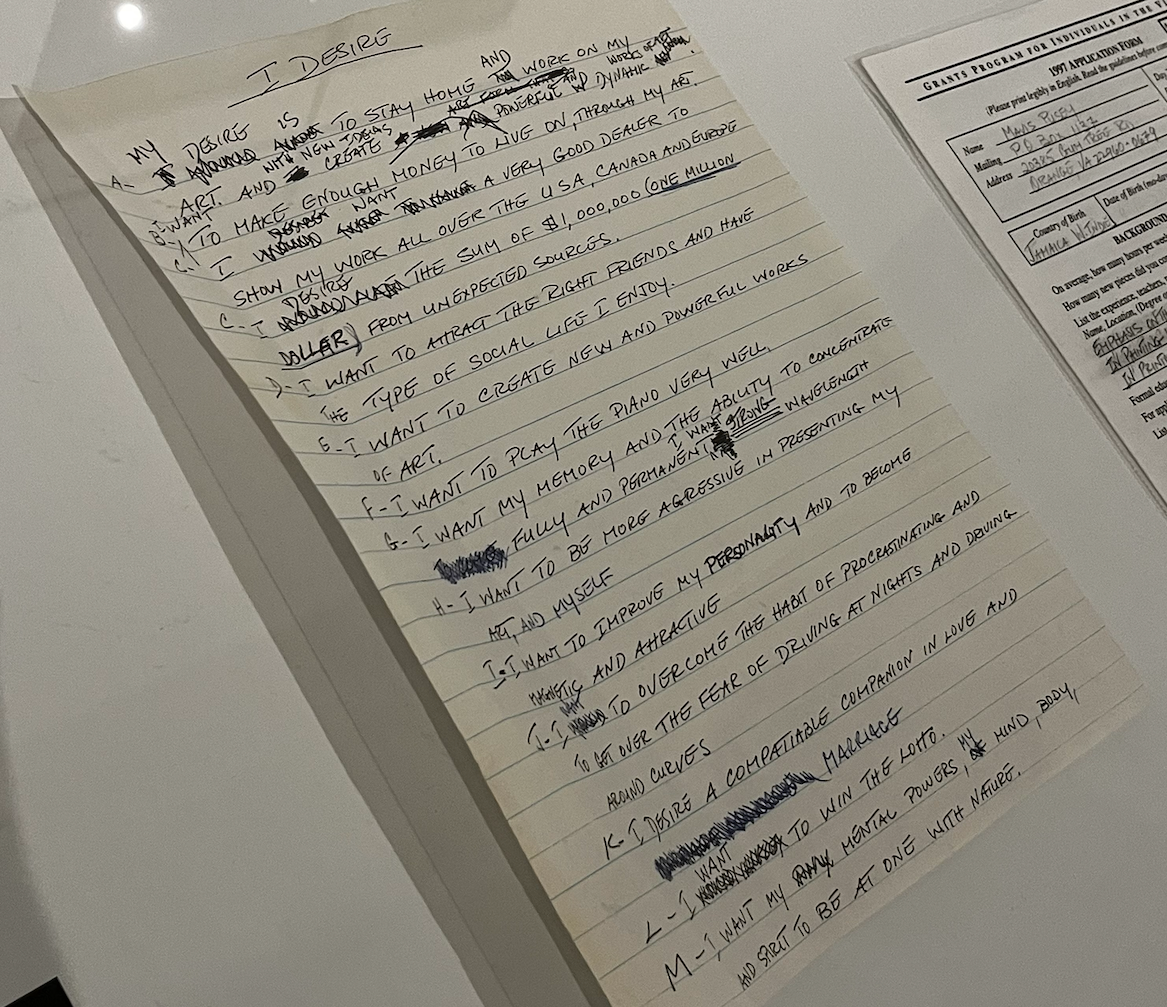Mavis Pusey: Mobile Images
Institute of Contemporary Art
118 S 36th St.
Philadelphia
Showing through Dec. 7, 2025
Seen July 27, 2025
A new retrospective on an unsung abstractionist includes some surprisingly personal artifacts — like a sheet of notepaper with the ballpoint pen inked title, “I Desire.”
“I want to create new and powerful works of art,” the journal entry by artist Mavis Pusey reads. It also states: “I want to play the piano very well… I want to improve my personality and to become more magnetic and attractive… I want to win the lotto… I want to get over the fear of driving at nights and driving around curves.”
The Institute of Contemporary Art dug deep while curating “Mavis Pusey: Mobile Images,” the first major museum survey of Pusey’s life and 50-year career. The outcome is both an intimate biographical look at a leading artist in abstract geometry and a conceptual review of the technosociological shifts of the mid-20th century. More than a rehashed artist statement, the show is a live reflection of a woman who saw society as it was — and was able to illustrate its underlying and ever-changing gears.
Pusey — who was born in Jamaica in 1928 and moved to New York City at 18 to study fashion — captured the swift changes happening in music, architecture, politics and style through the ‘60s and ‘70s. Though her work spans additional decades, the ICA focuses primarily on her creative process during her career’s ascension, which was celebrated at the time but has since been rarely remembered by formal institutions.
The evolutions Pusey sought in herself — to overcome phobias and modify herself into a perfected persona — embodies, in a refracted sense, the main theme of her work: Transfiguration. Pusey’s dream of becoming immaculately well-rounded shows itself in her expansive approach to representing the most core elements of her subjects through geometric obsession. She painted, screen printed, stitched, photographed, drew, and wrote about fashion, construction, music and marches as they changed form over time in major cities like London, Paris and New York City throughout the mid to late 1900s.

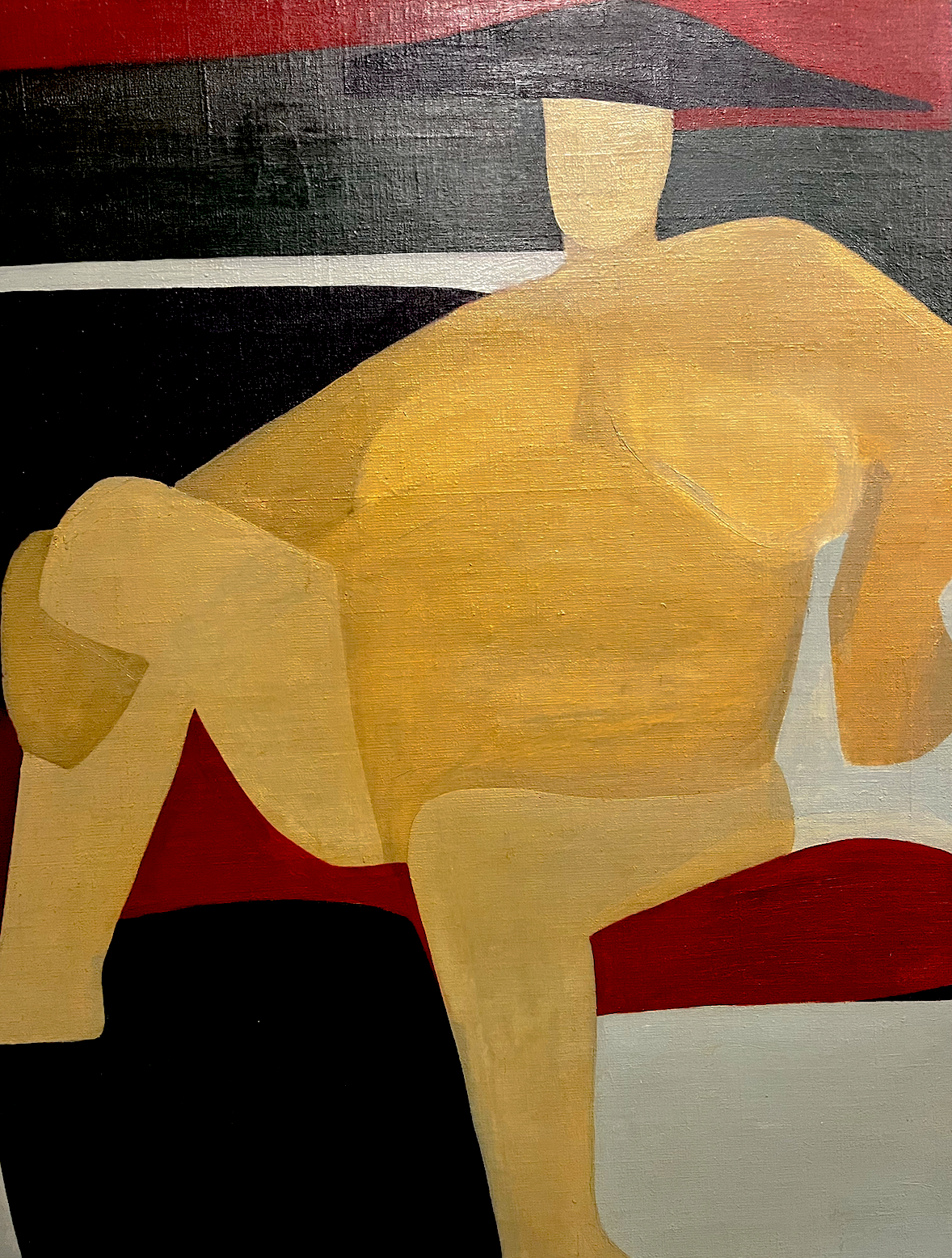
Her career was regularly affected by the imperfect promise of financial constraint. After dropping out of school due to money, she began working at a bridal gown boutique, where her design work prompted some of her experimentation with geometric ideation. Through traditional figuration, she, in her own words, “touched something that fashion wasn’t,” branching out artistically away from producing simplified ideals of beauty into painting portraits of people that used blasé curves and chunks to capture the loose forms of normal human bodies, as seen in her 1961 work, “Suzy" (pictured above).
This blunt abstraction evolved into more colorful and intricate representations of then-modern machinery and technology. Take, for example, an untitled ink and graphite piece resembling a vinyl cover, with yellow and white lines symbolizing a track list on the side and central circles and rectangles symbolizing the inner workings of a record player. Another work of scarlet marker called “Paris, Mai-Juin,” details the jolting power of an electric guitar, shown in silver, with the soft circular power of a banjo traced underneath.
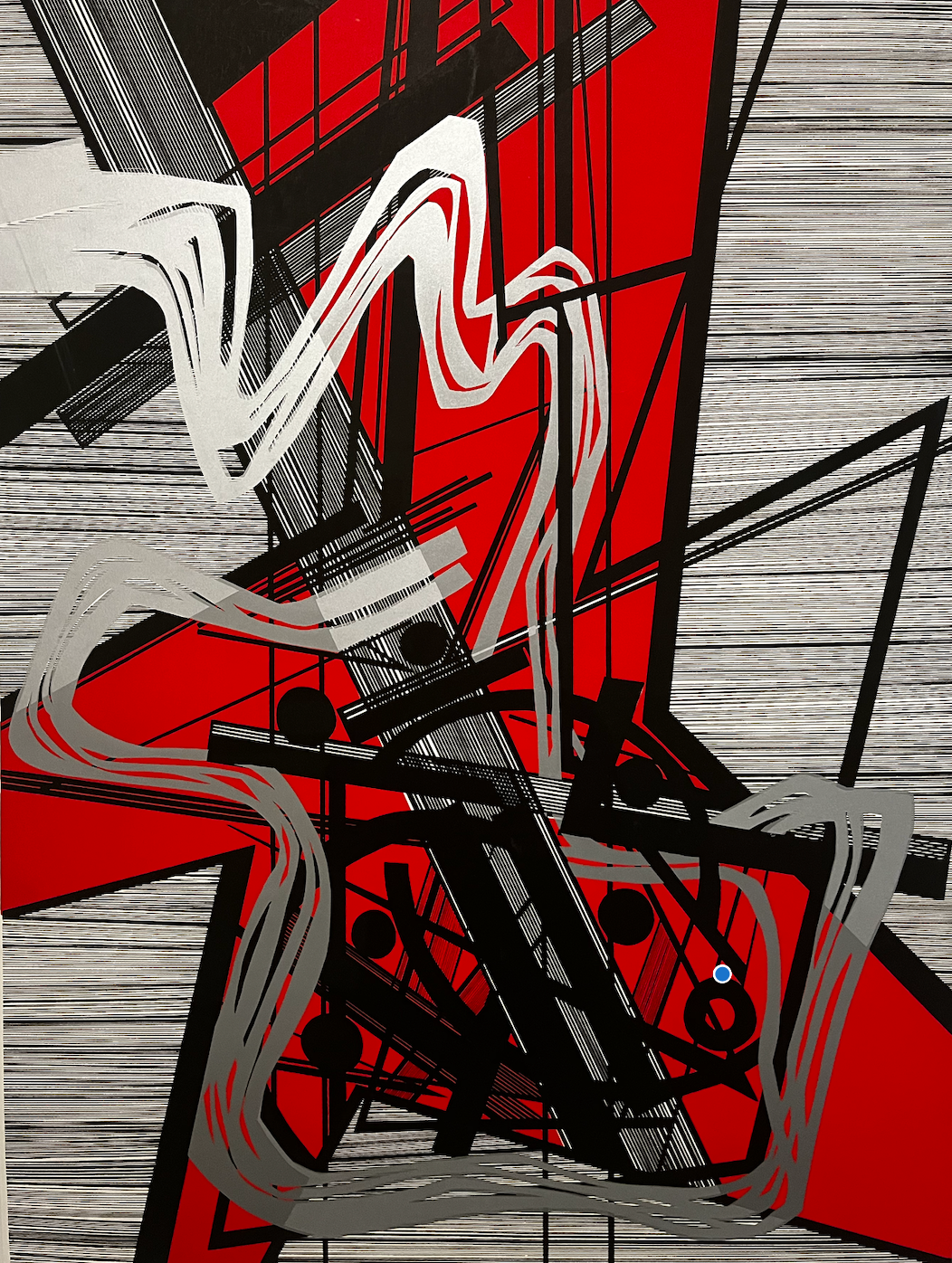
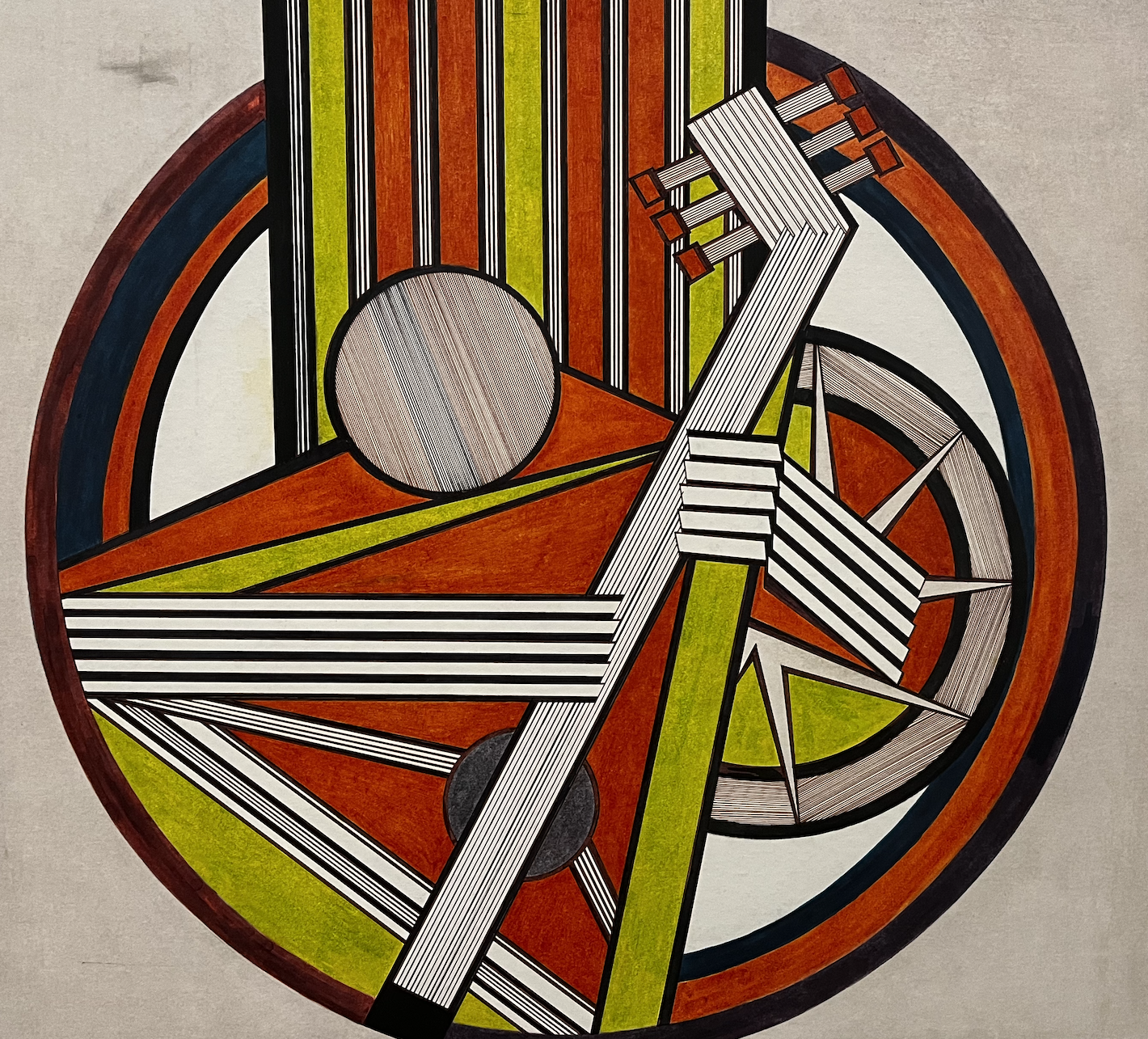
These two pieces hit on the rapidly changing music culture of the ‘60s, as well as Pusey’s own personal fixation on and appreciation for transformation. Whether through record player or live concert, music was a change agent of the time. The juxtaposition of guitar and banjo, the shows’ curators suggest, is a reference to Pusey’s witnessing of the 1968 student uprisings in Paris. At the time, she described one display of dissent as “very calm… and then suddenly everything burst, and things began to happen… I closed my eyes and the sound of the feet… created the music… if you are in a crowd, you close your eyes, you listen to that music, it’s fantastic, because you hear the highs and lows.”
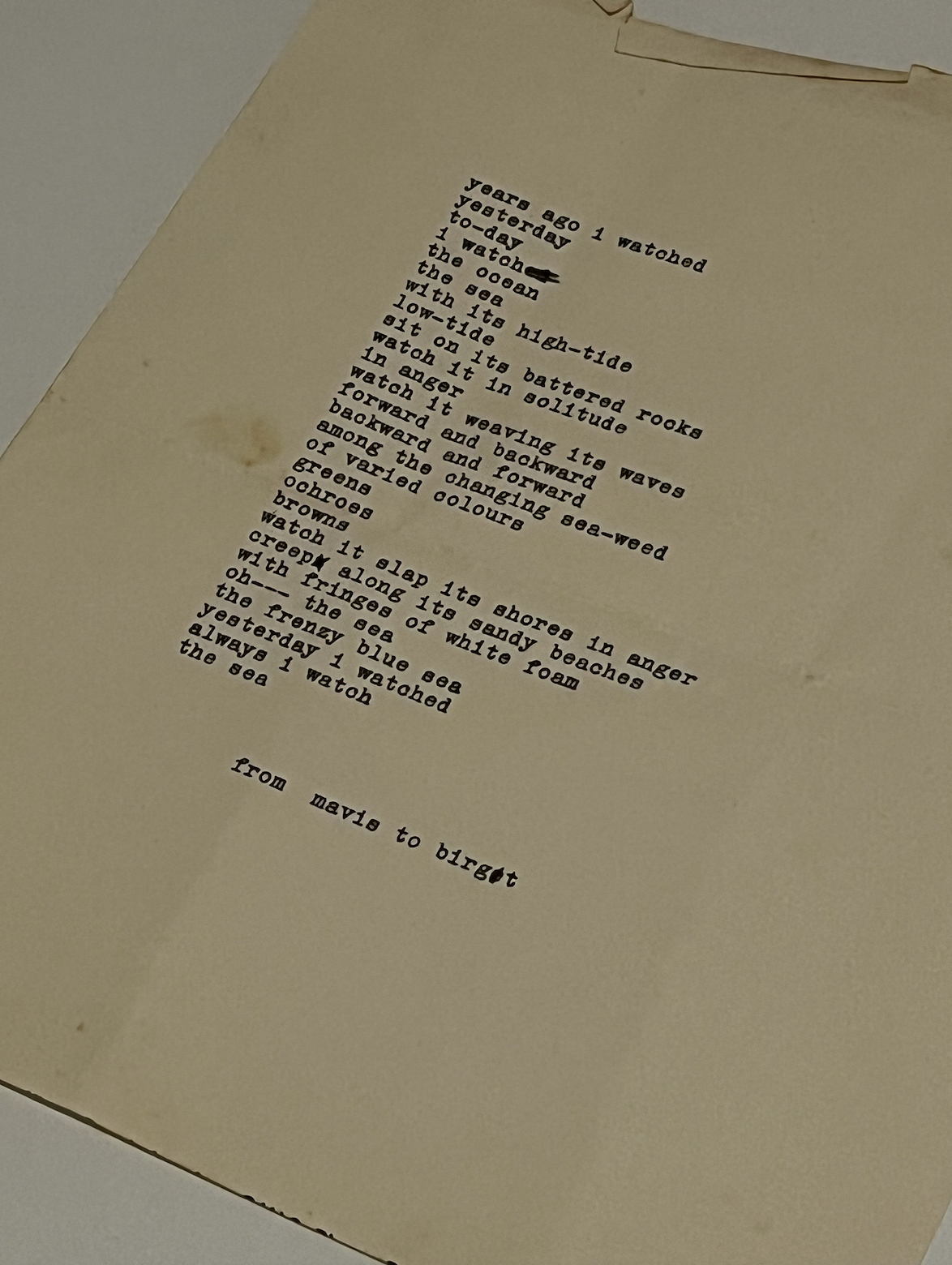

Pusey’s poetry similarly embraces the peaks and pits of time. The ICA includes a typewriter stanza from Pusey’s files: “Years ago I watched/ yesterday/ to-day/ I watch the ocean/ The sea/ With its high-tide/ Low-Tide/ Sit on its battered rocks/ Watch it in solitude/ In Anger/ Watch it weaving its waves/ Forward and backward/ Backward and forward/ Among the changing sea-weed/ Of varied colours/ Greens/ Ochroes/ Browns/ Watch it slap its shores in anger/ Creep along its sandy beaches/ with fringes of white foam/ oh— the sea/ the frenzy blue sea/ Yesterday I watch/ Always I watch/ The sea.”
In Pusey’s world, the highs and lows of life are like x’s and o’s. The nuance in between comes through in color. Though some of her designs present the primary colorism of other abstractionists like Dutch theorist Piet Mondrian, an untitled sketch marked with Pusey’s own notes highlight her commitment to working out exact hues to use. “Mix black, magenta and ultramarine to get the warm midnight blue we talked about,” she reminds herself in a paper margin.
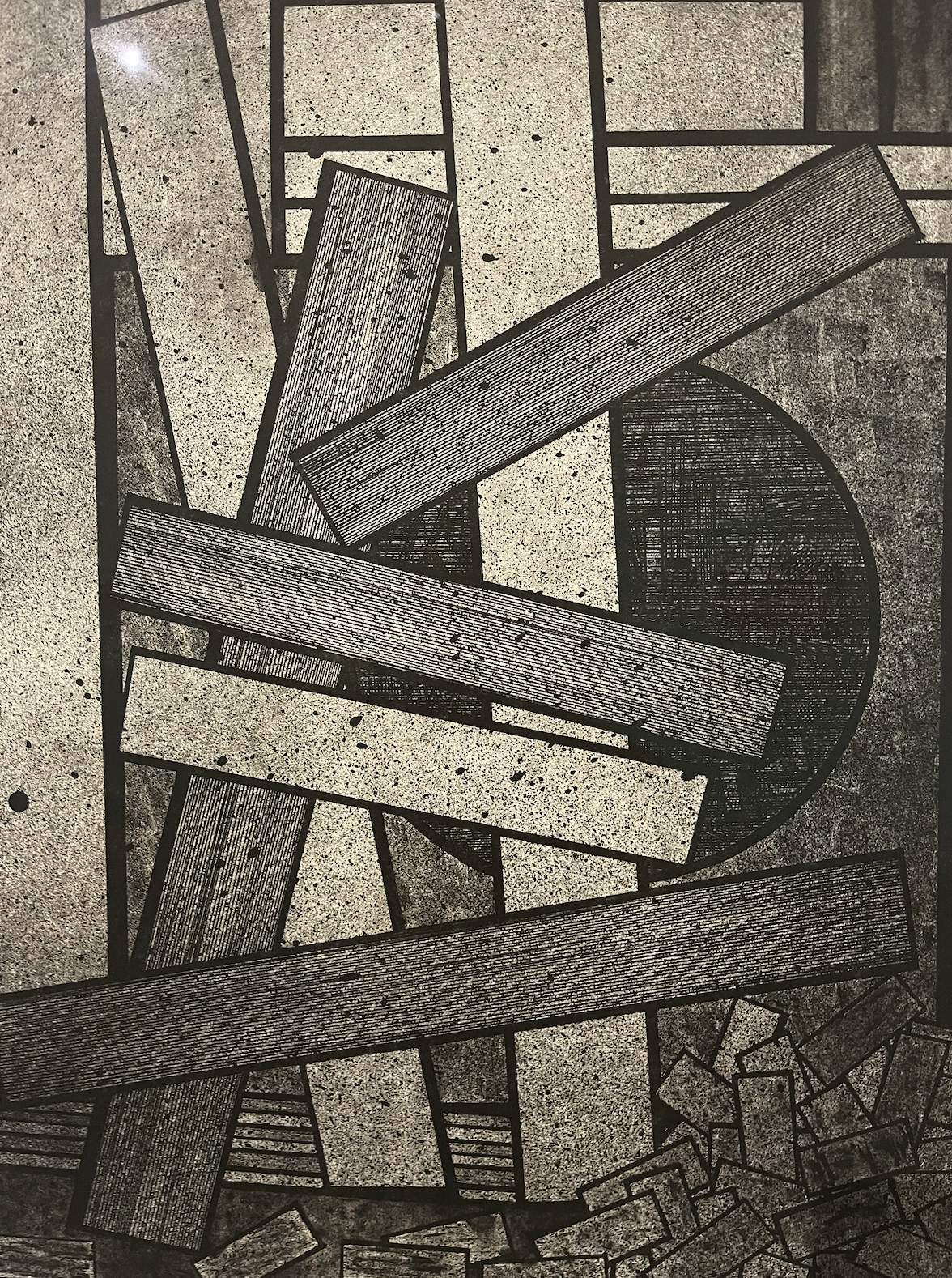
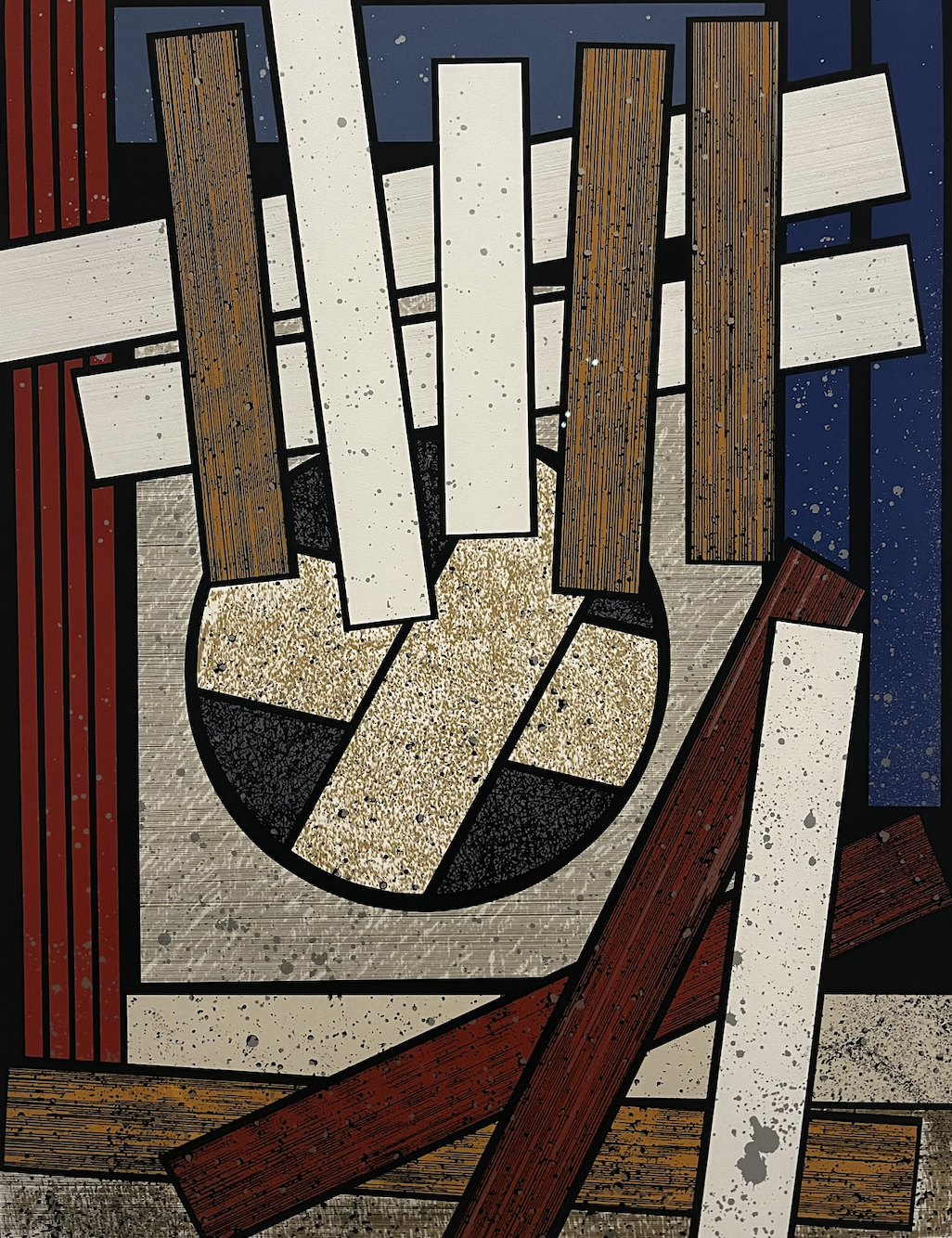
Pusey is perhaps best known for her depictions of demolition. Screenprints such as the “Dissolution of X” or “Broken Construction at Dusk” get at the askew and hasty nature of urban renewal across American cities in the ‘70s through tidy rectangles and squares personalized with splotchy, split textures and disordered intersection, like panels of wood hurriedly nailed against mysterious portholes. Rather than criticizing gentrification, Pusey appeared to be almost journalistically chronicling its character: “Though I hate to see them torn down,” she wrote of the buildings she visually reproduced, “they have an excitement about them. I fantasize about what happened inside of them.”
To Pusey, change was meant to be captured in as many shots as possible. She combined impressionism, geometric abstraction and futurism together to paint pictures of changing landscapes at different times of day, in various lights and through independent means. Though her forms leaned increasingly rigid and systemic, they always managed to carry the richness of humanity on their spines. As her now-public diary prompt makes clear, Pusey understood both what was and how things could be. She devoted her life to the pursuit of positive change by documenting single frames of motion again and again.
“I desire the sum of $1,000,000 (ONE MILLION DOLLAR) from unexpected sources,” that same piece of paper reads. “I desire a compatible companion in love and marriage. I want my mental powers, my mind, body, and spirit to be at one with the universe.”
Throughout her lifetime, which ended in 2019 following a declaration of bankruptcy and a case of long-term dementia, Pusey saw the beauty of bridal gowns, the contractual luxury of marriage, and the fatal power of money problems. She also saw the ocean's rippling tide, protesters' marching charge, and cities' changing housing supply.
A lot remains unknown about the under-appreciated artist — for example, did she ever overcome her fear of “driving around curves”? Despite her more private problems, her art is a testament to the beauty of public transformation; by embracing pen, pencil and other technological forces, Pusey drove her mind around all kinds of curves and lines, executing control over complicated histories.
Whether or not she became as well-rounded as she wished, her work took on the shape she wanted to spin.
